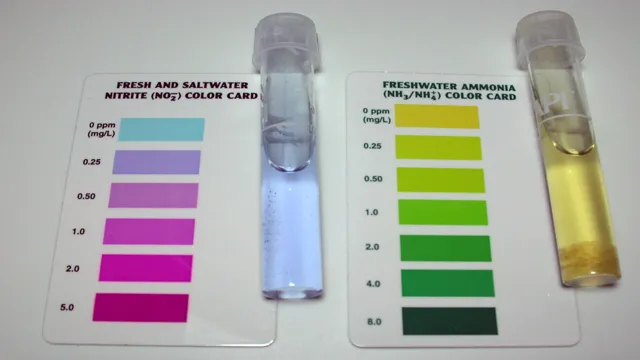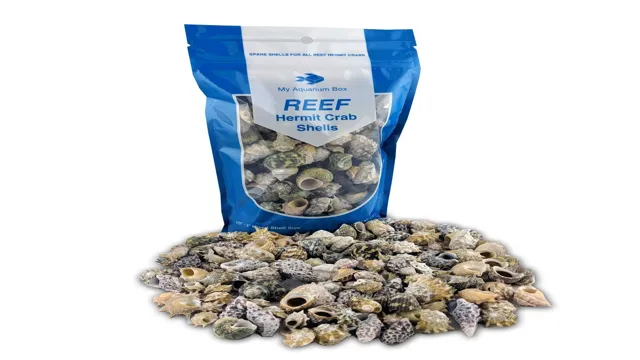Keeping an aquarium is a great way to add life and color to your living space. But with great beauty and life in your aquarium comes great responsibility – of ensuring that the water quality in your aquarium is safe for your aquatic friends to thrive in. Poor water quality can cause a range of health issues for fish and other living organisms in your aquarium, which can be detrimental to their health and happiness.
So, how do you check the water quality of your aquarium? Worry not! Checking the water quality of your aquarium is not rocket science. In fact, it is a simple process that every aquarium owner must know. Essentially, there are a few key parameters that need to be tested to determine the water quality of your aquarium.
These parameters include pH level, ammonia, nitrite, nitrate, and water hardness or alkalinity. Once you have a good understanding of each of these parameters, you can maintain the right balance in your aquarium water. But how do these parameters affect your aquatic pets? Why is it essential to check them regularly? And what tools do you need to test them accurately? These are some of the questions we will answer in our blog post.
So, whether you’re a seasoned aquarium enthusiast or a beginner, read on to learn how to check the water quality of your aquarium and keep your aquatic friends healthy and happy!
Why Test Aquarium Water
Are you wondering how to check the water quality of your aquarium? Testing the water is crucial to maintaining a healthy environment for your fish. Poor water quality can lead to stress, illness, and even death. Testing for ammonia, nitrite, nitrate, pH, and water hardness should be done regularly to ensure that levels are within the safe range for your fish.
Without testing, it can be difficult to determine what changes need to be made to improve water quality. The most accurate way to test aquarium water is with a test kit specifically designed for aquarium use. By monitoring and maintaining proper water quality, you can ensure the health and well-being of your fish.
Importance of Water Testing
Water testing is of utmost importance when it comes to maintaining a healthy aquatic environment. For aquarium owners, testing the water regularly is crucial to ensure the health and well-being of fish and other aquatic creatures. But why is testing aquarium water so critical? Well, aquarium water is a complex mixture of elements, chemicals, and microorganisms that can easily get imbalanced and negatively impact the aquatic life.
Testing the water helps to detect any physical and chemical imbalances such as pH, nitrate, ammonia, and chlorine levels that could be harmful to fish. Additionally, testing helps to monitor water quality over time, making it easier to detect changes and adjust water conditions as necessary. Neglecting to test aquarium water can lead to poor water quality, fish stress, and even serious health problems.
Therefore, it’s highly recommended to make you test aquarium water regularly to ensure a healthy and thriving aquatic environment.

Types of Water Tests
Testing aquarium water is essential to ensure a healthy and thriving aquatic environment for your fish and plants. There are various types of water tests available, each assessing different components of the water chemistry. pH, ammonia, nitrite, and nitrate levels are some of the crucial factors that must be monitored regularly.
Additionally, testing water hardness, alkalinity, and dissolved oxygen levels can also play a vital role in maintaining the overall water quality. Testing water is a simple, yet effective way to identify any potential issues and take corrective measures before it’s too late. With so many types of water tests available, it’s important to choose the right one and perform them regularly to keep your aquatic inhabitants happy and healthy.
When to Test Aquarium Water
Testing aquarium water is a crucial task that every aquarium owner should perform regularly. This is because the quality of the water can significantly affect the health and well-being of the aquatic life in the tank. Testing aquarium water helps to ensure that the correct pH, temperature, and water hardness levels are maintained.
It can also make you aware of any water issues such as high levels of ammonia or nitrate, which can be harmful to fish and other aquatic organisms. If these issues are not corrected promptly, they can lead to the sickness or death of the fish. Therefore, it is important to test your aquarium water regularly to ensure a healthy and thriving aquatic environment.
Step-by-Step Guide to Testing Water Quality
If you own an aquarium, testing water quality is essential to ensure your aquatic pets thrive in their environment. A step-by-step guide is necessary to check the water quality of the aquarium. The first step is to determine what parameters to check for.
This typically includes measuring the pH levels, ammonia, nitrite, and nitrate levels. There are test kits available at pet stores and online that can help you check all of these parameters. Once you have the kit, you need to follow the instructions for each test carefully. (See Also: How to Make a Desktop Aquarium: Step-by-Step Guide for a Stunning Fish Tank in Your Office)
It’s important to refrain from making any assumptions about the results and to retest if necessary. If the test results are outside safe levels, take the necessary steps to adjust the water quality accordingly. Checking the water quality of your aquarium may seem daunting, but it’s essential for your pet fish’s survival.
Remember, healthy aquatic pets start with healthy water!
Gather Supplies
When it comes to testing the water quality of a particular area, one of the most important steps is gathering supplies. You’ll need a variety of items to conduct the tests, including test kits, water collection containers, thermometers, and pH meters. Additionally, you may need gloves and protective eyewear to ensure your safety during the testing process.
It’s important to ensure that your supplies are in good condition and have not expired, as this can affect the accuracy of your results. By properly gathering and maintaining your testing supplies, you can rest assured that you’re equipped to accurately test the water quality in your area.
Fill Test Tubes
Testing the quality of water is an important task that requires precision and accuracy. One crucial step in the process is filling test tubes with the water sample. To do this, start by cleaning the test tubes thoroughly using soap and warm water.
Rinse them with distilled water and air dry them afterwards. Once the tubes are clean and dry, label them to avoid confusion and fill each to the brim with the water sample. Be sure not to touch the water with your fingers or contaminate it in any way.
Cap the tubes tightly and shake them a few times to ensure the water mixes well with any reagents or chemicals that will be added in the next steps of the testing process. This step may seem simple, but it’s important to do it correctly to avoid errors that could affect the overall accuracy of the test results. Properly filled and labeled test tubes will pave the way for an efficient and accurate water quality testing process.
Read Test Results
Testing water quality is extremely important in order to ensure that the water you drink is clean and safe. The first step in testing your water is to collect a sample. This can be done by filling a clean, sterilized container with water directly from the source.
Next, you will need to perform a series of tests to determine the different parameters of the water such as pH, total dissolved solids, chlorine levels, and others. Once you have completed your tests, it’s time to read the test results. This can be done by comparing your results with the standard values established by the Environmental Protection Agency or other relevant authorities.
If your results are within the acceptable range, your water is considered safe to drink. However, if your results are outside of the acceptable range, you should take steps to improve the quality of your water. This may involve installing a water filtration system or having your water professionally treated.
By testing your water regularly and reading the test results, you can ensure that you and your family are drinking safe and clean water.
Interpreting Test Results
If you’re an aquarium owner, checking the water quality of your tank is essential to ensure the health of your aquatic pets. There are several parameters you need to test for, including pH, ammonia, nitrite, nitrate, and water hardness. The easiest way to do this is by using a water testing kit, which you can purchase at your local pet store or online.
Once you have the testing kit, follow the instructions carefully, as each test requires a specific amount of water and a specific testing procedure. Once you get your results, it’s important to interpret them correctly. Generally, you want to aim for a pH level between
0 and 0, ammonia and nitrite levels that are undetectable, nitrate levels below 40 ppm, and water hardness that’s suitable for the type of fish you own. If your results aren’t within the desired range, take appropriate measures to correct them, such as performing a water change or adjusting the pH level with the right chemicals. (See Also: How to Cancel Georgia Aquarium Reservation: A Step-by-Step Guide)
By checking your aquarium water regularly, you can help prevent fish illnesses and ensure a healthy and thriving environment for your pets.
Ideal Water Parameters
When it comes to interpreting test results for aquarium water parameters, it’s important to understand what the different measurements mean and how they relate to the health of your aquatic inhabitants. Some of the most commonly tested parameters include pH, ammonia, nitrite, and nitrate levels. pH measures the acidity or alkalinity of the water, with a range of
5-5 being ideal for most freshwater fish. Ammonia and nitrite are toxic compounds that are produced from fish waste and decaying organic matter, and they should always be at undetectable levels.
Nitrate, on the other hand, is a less harmful compound that can accumulate over time and should be monitored to ensure it doesn’t exceed safe levels. Keeping a close eye on these water parameters and taking corrective action as needed can help ensure a healthy and thriving aquarium ecosystem.
Troubleshooting Common Water Issues
When it comes to troubleshooting water issues, interpreting test results is an essential step that can help you pinpoint the problem and take the right corrective measures. The test results can show the levels of various contaminants, such as bacteria, lead, pesticides, and minerals, like iron or manganese, that can affect the taste, smell, or color of your water. For instance, high levels of bacteria can cause serious health issues, while excessive minerals can leave red or brown stains on your clothes or dishes.
Interpreting the test results can be daunting as you need to understand the units of measurement and the acceptable levels set by the relevant agencies. However, you can seek the help of a professional to guide you through the process and advise you on the best course of action. With proper interpretation of the test results, you can ensure the safety of your drinking water and prevent future problems.
So, don’t hesitate to take the necessary steps to maintain healthy and clean water in your home.
Maintenance
Maintaining water quality is essential for the health of your aquarium inhabitants. One way to check the water quality is to use a test kit specifically designed for aquariums. These kits typically test for pH levels, ammonia, nitrite, and nitrate levels.
It’s important to test your water weekly to ensure that the levels are within the appropriate ranges. Additionally, you can visually inspect your tank for any changes in color, clarity, or odor. If you notice any of these changes, it could be a sign of a problem with the water quality.
Regular water changes and proper filtration can also help maintain good water quality in your aquarium. By regularly checking and maintaining water quality, you can ensure a healthy and thriving aquatic environment for your fish and other aquatic creatures in your aquarium.
Regular Water Changes
Regular water changes are an essential part of maintaining a healthy aquarium. It is recommended to change 10-20% of water every week. The use of a siphon makes the process easier, as it allows you to remove debris from the bottom of the tank while changing the water.
It is important to use a dechlorinator before adding the new water to remove any harmful chemicals. Regular water changes can prevent the buildup of toxins, maintain proper levels of pH and nutrients, and keep the water clear and fresh. Neglecting water changes can lead to an unhealthy environment for your fish, causing stress, disease, and even death.
Therefore, it is crucial to make regular water changes a part of your aquarium maintenance routine to ensure the wellbeing of your aquatic pets. (See Also: How to Grow Algae in Aquarium: Expert Tips for a Thriving Aquatic Environment)
Cleaning the Tank
If you own a fish tank, proper cleaning is crucial for maintaining a happy, healthy aquatic environment. Neglecting tank maintenance can lead to imbalances in your tank’s chemistry, which can harm or even kill your fish. Cleaning the tank is as easy as replacing a percentage of the water in your tank every one to two weeks, depending on the size of your tank and the number of fish you have.
Start by turning off your tank’s filter and heater, removing any decorations or plants, and carefully scooping out around a quarter of the tank’s water into a bucket. Gently scrub the sides of your tank with an algae scrubber, being careful not to scratch the glass or acrylic. Rinse off any decorations or plants you’ve removed in the old tank water to avoid killing off beneficial bacteria, and then replace them.
Fill up your tank with fresh water, adding de-chlorination drops to remove any harmful chemicals in the water. Turn your filter and heater back on, and your tank will be ready for your fish to enjoy again in no time!
Conclusion
In conclusion, checking the water quality of your aquarium is crucial for maintaining a healthy and happy ecosystem for your underwater friends. With the right tools and techniques, you can easily ensure that your aquarium’s water is safe and free from harmful chemicals and toxins. And if all else fails, just remember the wise words of a famous fish: ‘just keep swimming and testing that water!'”
FAQs
Why is it important to check the water quality of an aquarium?
Checking the water quality of an aquarium is crucial as it affects the health and well-being of the aquatic inhabitants. Poor water quality can lead to stress, diseases, and even death.
What parameters should be checked to determine the water quality of an aquarium?
The important parameters to check for water quality in an aquarium include pH level, ammonia, nitrite, nitrate, and water hardness.
How can pH level affect the aquarium inhabitants?
The pH level of the water can affect the health of the fish and other aquatic inhabitants. Different species require different pH levels, and a significant change in pH level can cause stress or even death.
What is the optimal pH level for a freshwater aquarium?
The ideal pH range for a freshwater aquarium is between 6.5 and 7.5. However, certain species may require a specific pH level.
What is the recommended frequency for checking the water quality of an aquarium?
The water quality of an aquarium should be checked at least once a week, and more frequently if there are any changes or new additions to the tank.
How can I test the water quality of my aquarium?
You can test the water quality of your aquarium using a water testing kit, which is available at most pet stores or online. The kit will contain test strips or liquid reagents to measure various parameters.
What can be done to improve the water quality of an aquarium?
To improve water quality, regular partial water changes, cleaning of filters and decorations, and avoiding overfeeding can all help. It’s important to maintain proper water parameters to ensure a healthy environment for the aquarium inhabitants.







